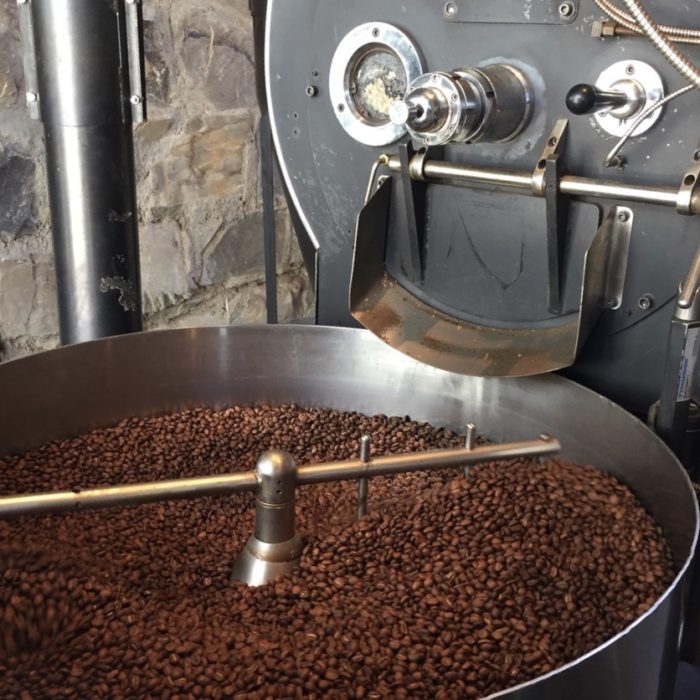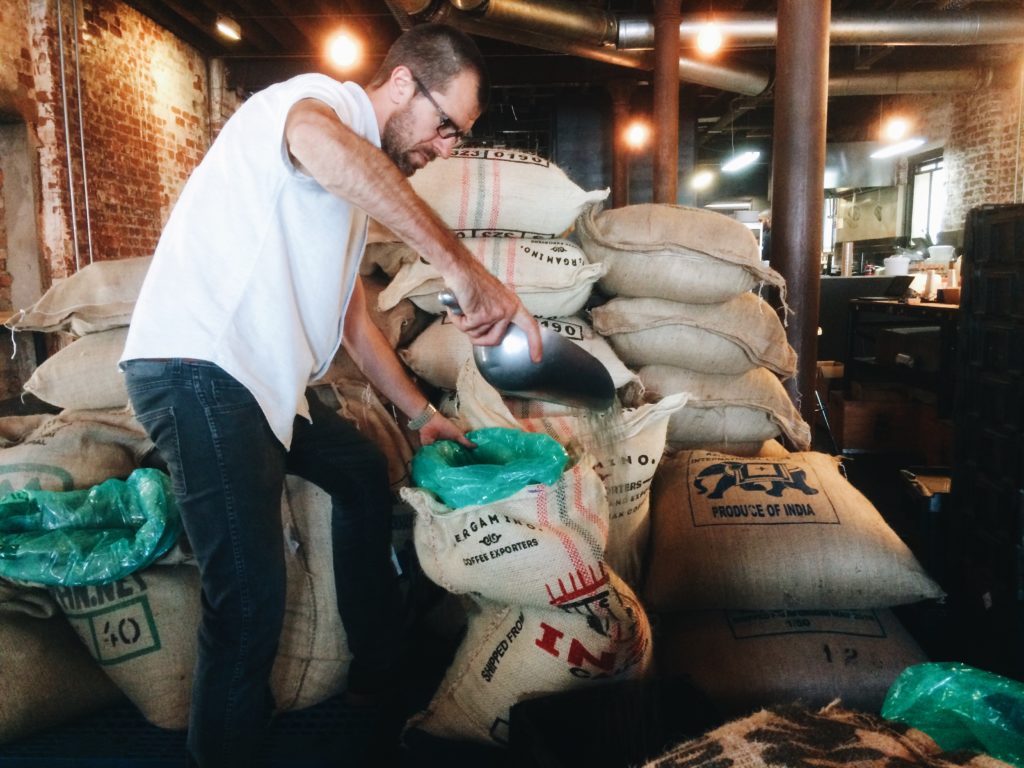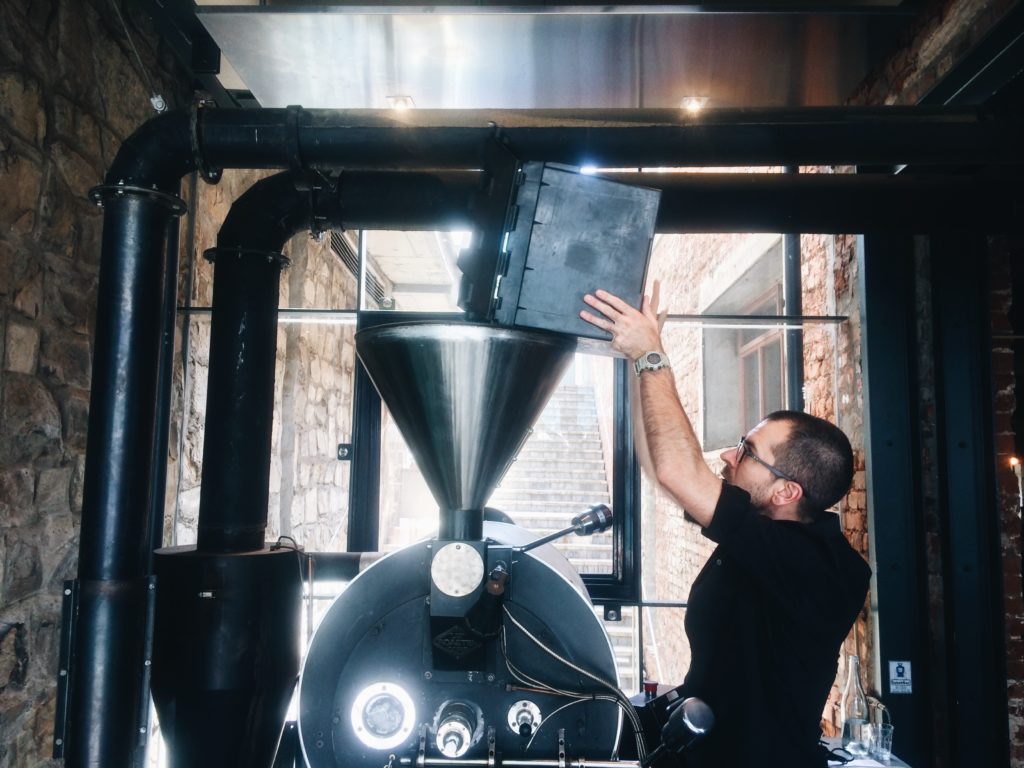Artisan—Roasted, Speciality Coffee Explained (Part 1)

All the dictionaries out there state the word Artisan as denoting goods produced on a small scale using traditional methods by skilled craftsmen.
That sounds about right when you think about specialty coffee roasting as opposed to commercial grade roasting (think of supermarket and other large commercial brands)

Go for the green
The highest quality coffees have unique characteristics determined by varietal, terroir, climate, and the care and attention paid by the farmer pre-harvest, during picking, and when processing the coffee. Lots of green coffee – even coffees from the same country, the same region or even the same farm – can have substantially different levels of quality and different character. Speciality beans meet specific higher minimum quality standards and the best of these coffees are typically produced in smaller lots which cannot be used by larger roasters without blending them to reach the volumes they need (often blending with lower quality lots from the same producer or even other origins). The best speciality roasters will select specific lots from each producer.
Roasters Tip: If the coffee packaging does not state where the coffee is from, along with farm specs, then it’s probably not specialty-grade coffee, and consequently not from an Artisan Roaster.
Be aware that words describing origin or region are sometimes used by non-speciality roasters to make a commercial coffee sound like it’s “high quality”. But the only true measure of speciality coffee is in the cup. For example, even if a bag of coffee says “Ethiopia Sidamo” or “Guatemala Antigua” (country+region), that does not necessarily imply anything in terms of quality (or what the price should be). It’s like saying a bottle of wine was made from grapes from Stellenbosch –an “origin” which could include wines from top cellars like de Trafford, Saxenburg, Rust en Vrede or De Toren costing R1,000, 2,000 or even more per bottle together with everyday, much lower quality wines at R50 a bottle. No one expects these to be the same even though they are all made from red wine grapes grown near Stellenbosch.

Turning green beans into roasted coffee
So the best artisan roasters start with better quality green than most commercial roasteries. These high-quality coffees have a great deal of flavour potential, which needs to be unlocked through various chemical reactions in the roasting process. A dedicated and experienced artisan roaster has spent years building the skills and experience to unlock the full potential of each of the coffees they select. That does not mean that the larger commercial roasteries are not skilled at producing a consistent product, but there are certain advantages to working by hand with smaller batches in a smaller roastery.
Roasting machines, and particularly drum roasters are basically rotating cylindrical ovens. They normally have temperature probes attached at various points to track temperature development in all roasts.
Temperature tracking and manipulation in the roasting process is the key to optimizing a coffee’s flavour profile. Most compounds in coffee have a particular flavour or sensation that can be identified via cupping. In this way, the roaster uses their skills (including ongoing experimentation) and sensory evaluation to achieve the result they want and feel is best for that coffee (and sometimes a specific brewing method). Sensory evaluation become one of the most important aspects of a coffee professional’s job. Sensory evaluation will occur at a more intensive level with Artisan roasted coffee compared to commercially roasted coffee, and in my opinion is one of the most fun parts of the job.
Continue reading about “Artisan-Roasted Speciality Coffee Explained” in Part 2